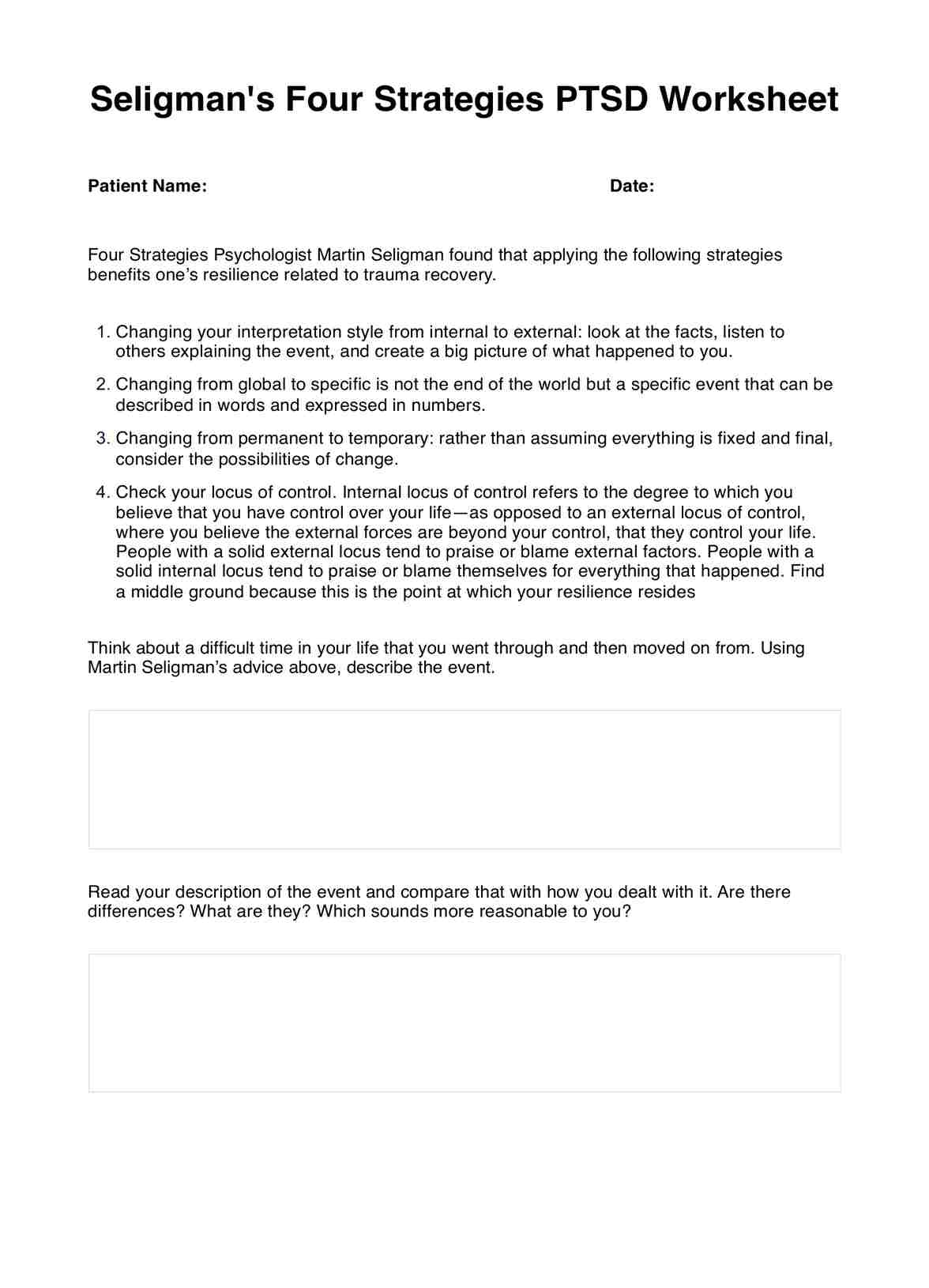The time it takes to complete Seligman's Four Strategies PTSD Worksheet can vary from person to person. It depends on factors such as the complexity of the traumatic event, the individual's willingness to engage with the process, and their familiarity with the strategies. Generally, individuals may spend 30 minutes to an hour or more on the worksheet.

Seligman's Four Strategies PTSD Worksheet
Explore Seligman's Four Strategies PTSD Worksheet and find an illustrative example. Learn how to apply these strategies for trauma recovery!
Seligman's Four Strategies PTSD Worksheet Template
Commonly asked questions
Seligman's Four Strategies PTSD Worksheet is valuable for reframing your perspective on traumatic events and building resilience. It guides you from self-blame to a more objective interpretation of the trauma, helping reduce psychological distress and improve coping mechanisms. By applying these strategies, you can gain clarity, emotional stability, and a sense of empowerment in your trauma recovery journey.
Seligman's Four Strategies PTSD Worksheet is designed for individuals who have experienced trauma and want to enhance their resilience and cognitive coping mechanisms. It can be used by anyone seeking to reframe their perspective on traumatic events, whether working with a mental health professional or using it for self-help. However, for individuals with severe trauma or PTSD, it is advisable to use this worksheet in conjunction with professional guidance and therapy.
EHR and practice management software
Get started for free
*No credit card required
Free
$0/usd
Unlimited clients
Telehealth
1GB of storage
Client portal text
Automated billing and online payments











